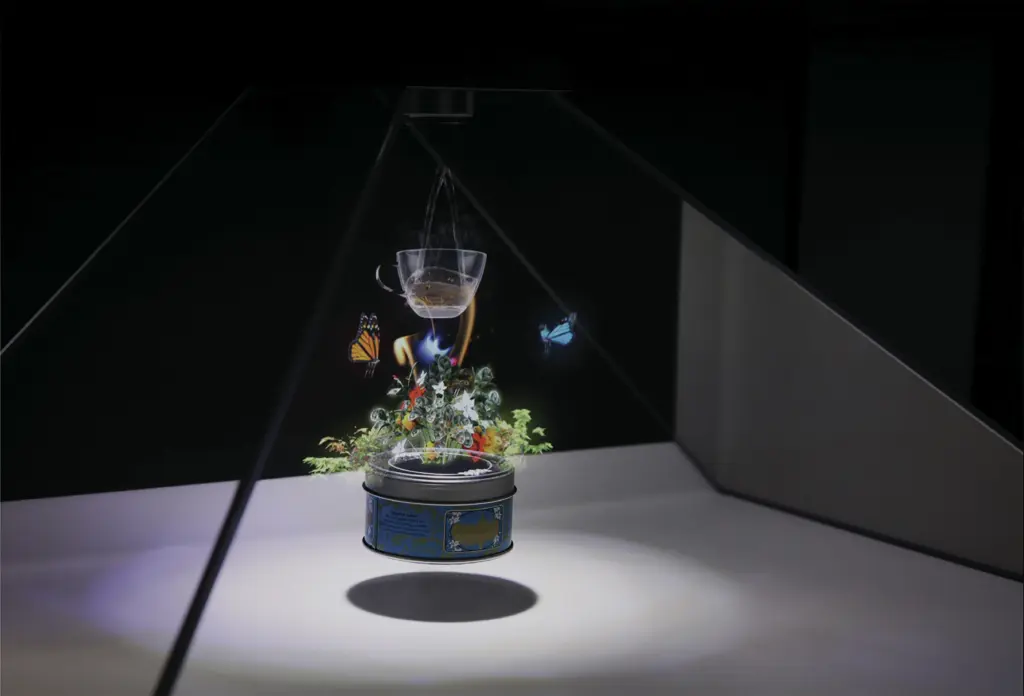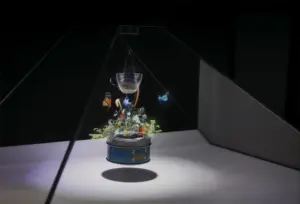Realfiction Holding AB has announced that it has received a notice of allowance for US patent application 17/439,033, which pertains to the company’s ECHO directional OLED display technology, from the US Patent Office (USPTO).
Back in January, the company announced the completion of the first version of its ECHO holographic 3D display and invited commercial partners to view the display at Realfiction’s development facilities in Taiwan from late February 2023, with a public demonstration set for later this year. The product is developed in collaboration with AmTRAN. The 17-inch full-HD ECHO display is capable of showing individual 3D and 2D visuals for two viewers at the same time. The chosen display size is tailored to specific use-cases, but Realfiction sees no technical limitations to creating larger, higher-resolution displays for more users.

Realfiction’s ECHO Directional OLED Display Patent
The patent focuses on an automultiscopic display technology that improves the performance and manufacturing complexity of display pixels to provide a 3D viewing experience for multiple observers without the need for special glasses. The technology uses a selective update, time-multiplexed pixel, and a novel method of controlling the direction of emitted visible light based on detected infrared reflections.
According to the filing, the OLED technology focuses on the design of a display pixel that can provide a stereoscopic (3D) image to multiple observers without the need for special glasses. The pixel is selectively updated and time-multiplexed. In the example given, if there are eight eyeballs (four observers with two eyes each) watching the display, light is emitted only towards each eyeball, in eight different directions, one eyeball at a time, at a high frame rate (e.g., 480 fps). This allows each observer to experience a 3D image at 60 fps (480/8).
The display system features an array of image pixels, each containing several subpixels. Every subpixel consists of a thin film stack, including an electroluminescent layer and a photo-sensitive layer. When light strikes a subpixel, a current is generated through both layers, causing the electroluminescent layer to emit light.
A key component of this display system is the addressing light element, which is comprised of multiple addressing pixels. Each addressing pixel defines a direction from the display’s first segment towards a viewpoint. An optical arrangement and a controller are in place to manage the light emitted by the respective addressing pixel.
The optical arrangement is designed to direct the light from the respective addressing pixel to the subpixels of the first segment. This process enables the subpixels to emit light visible from the observer’s viewpoint.
The bandwidth of the display is only 8 times greater than that of a normal display, as opposed to thousands of times greater. This is achieved by increasing the frame rate, which is more feasible for LED, OLED, and some recent LCD displays. The observers’ face positions are tracked, and they are illuminated with invisible infrared light in a sequence of 8 alternating patterns. Each pattern illuminates an area that includes the eye region of an observer.
Reflected infrared light from an eye region during a specific time slot is detected by the pixel, which then controls the emitted visible light. As a result, visible light from the pixel is only emitted back in the same direction as the infrared reflection, i.e., towards the eye region. This novel approach allows for the control of the direction of emitted visible light based on detected infrared reflections.
More on Realfiction
Realfiction is a Danish company that specializes in creating mixed reality display solutions. Founded in 2008 by Clas Dyrholm and Peter Simonsen, the company has been developing holographic and 3D display technologies for various industries such as retail, exhibitions, and events.
Realfiction’s products are designed to create immersive and engaging experiences by combining digital content with real-world objects. Their patented display technologies, such as the Dreamoc series and DeepFrame, allow for the creation of life-like holographic visuals without the need for special glasses or other wearables.
The company’s solutions are used in a variety of applications, including product demonstrations, brand activations, and interactive experiences. Realfiction continues to innovate in the field of mixed reality displays, aiming to create cutting-edge solutions that captivate audiences and improve customer engagement.

